Basic Augmented Chord Theory
The simplest definition of an augmented chord is a major triad (1 3 5) with a sharp 5th (so 1 3 ♯5), also called an augmented 5th.
So whereas, for example, the notes of a C major triad are C, E and G (root, 3rd and 5th), a C augmented triad would be C, E and G♯ (root, 3rd and sharp 5th).
All we do is moved the 5th of a major chord up by one semitone (the equivalent of one fret) to get an augmented chord.
We'd abbreviate this as Caug or, less commonly, using a plus symbol next to the chord root - C+.
Augmented Chord Structure
An augmented triad can be seen as major 3rd intervals stacked together.
For example, with C augmented, C to E (1 -3) forms a major 3rd interval, as does E to G (3 - ♯5), and then G# to C (♯5 - 1).

This formation of identical interval components creates what is known as symmetry. Later, I'll show you how this symmetry provides us with an effective trick we can use in our composition.
Hear The Tension!
As we move between the natural and sharp 5 of the chord (Cmaj to Caug in this example), you can hear the tension created by the augmented 5th...
Augmented Triad Chord Chart
As you play through these shapes, try and move to them from the more familiar major shapes. For example Dmaj - Daug.
This will help to train your eyes and ears to how the regular major triad becomes an augmented triad. Remember, we're just sharping one tone in the chord - the 5th.
In the charts below you can switch between intervals and fingering using the tabs at the top. But be aware that the fingering might have to change to accommodate changes to and from other chords!
Open Position Augmented Triads
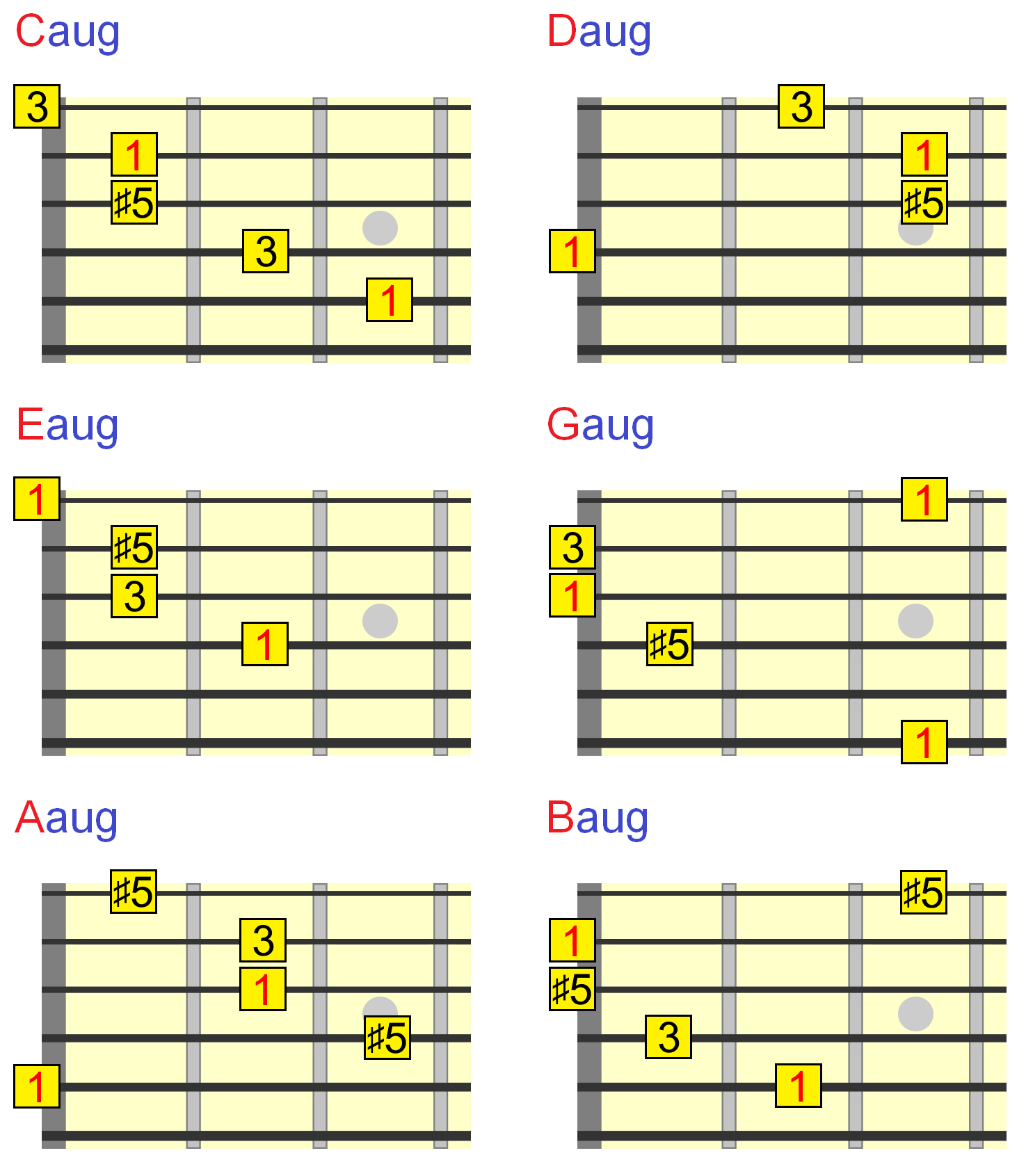
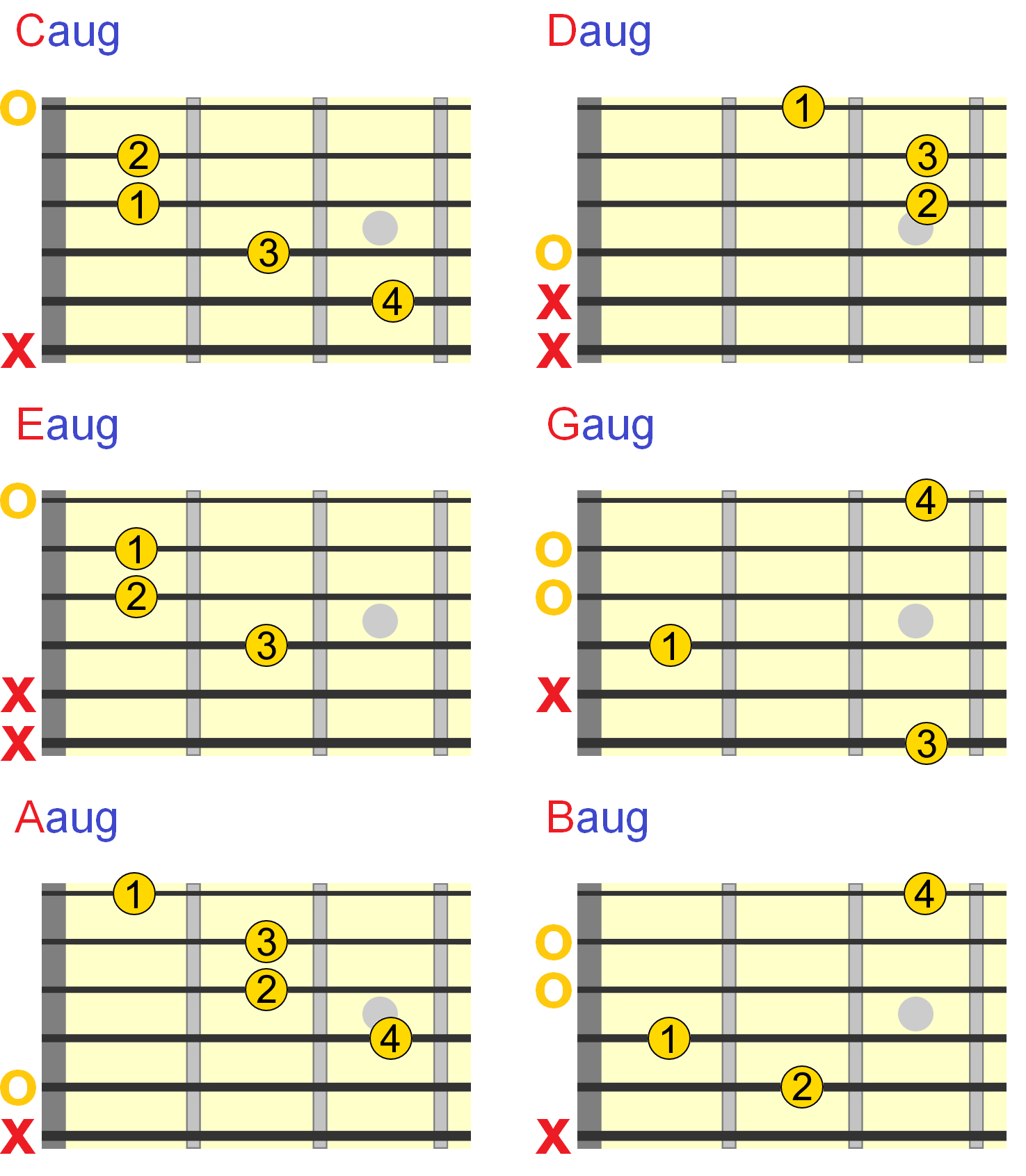
Later, I'll show you how to use the symmetry of augmented chords to play them anywhere on the neck.
Suspended 2nd Variant
For variation, you can also play the augmented chord with a suspended 2nd (sus2). In simple terms, this is where we move the major 3rd of the chord down two frets to a major 2nd interval. So with sus2 chords, we're essentially replacing the 3rd with a 2nd. A very pretty, yet equally tense chord...
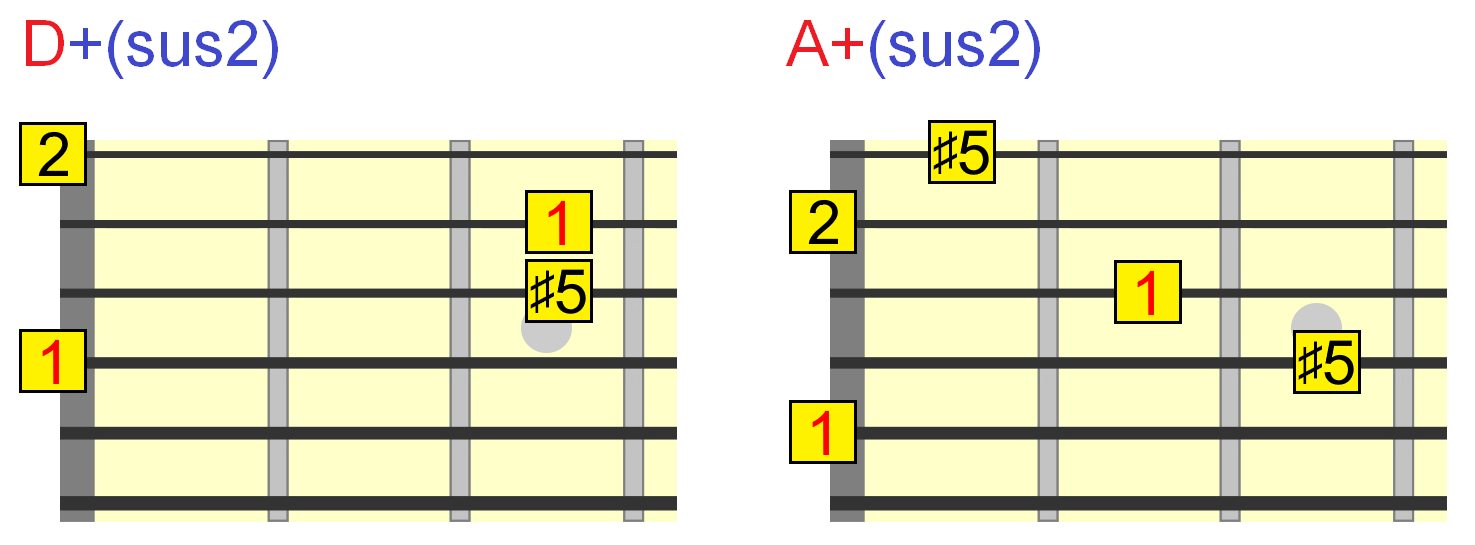
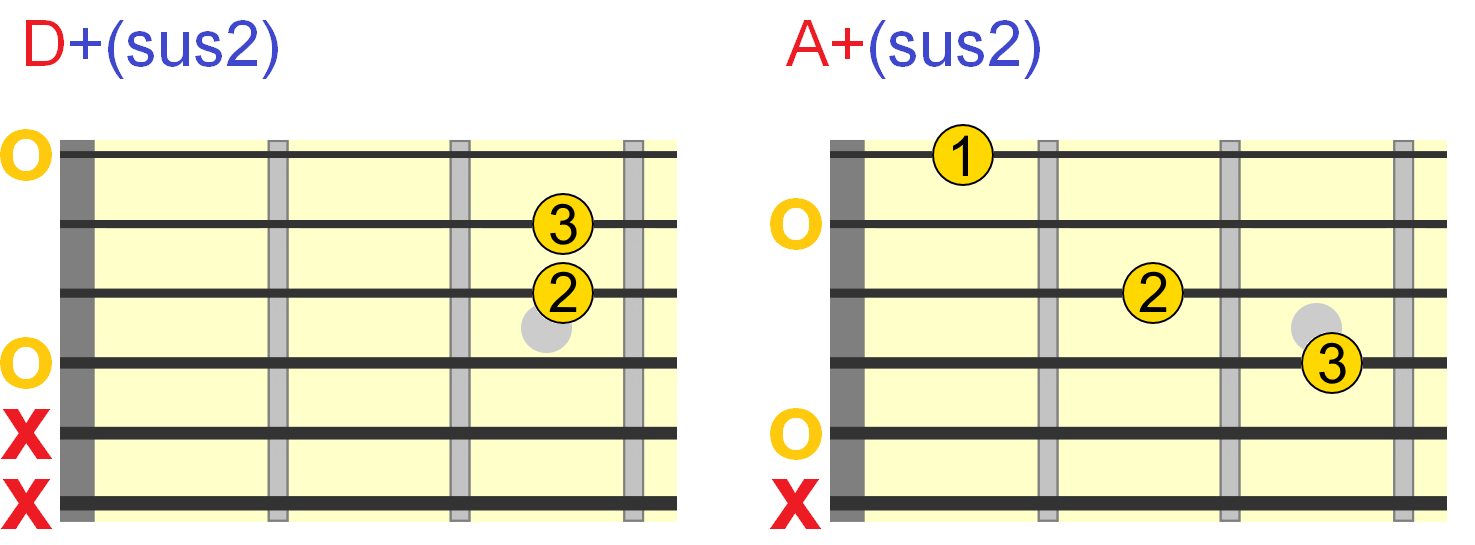
Augmented Chords In Progressions
Before we look at other variations (such as augmented seventh chords), let's focus for a moment on some ways augmented chords function in progressions.
Augmenting the Tonic Chord
Let's say we were in the key of C major. So C major would be our 1 or tonic chord - the home chord of the key.
Often, composers will augment the 1 chord to effectively destabilise it before moving to another chord in the key.
Typically the destination is the 4 chord. So in the key of C major, a typical movement would be...
Cmaj / Caug / Fmaj (or Fmaj7 in this example)...
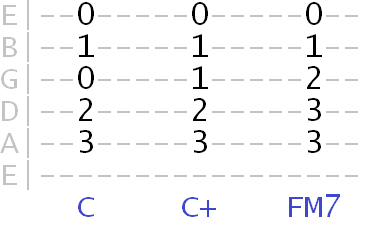
Another typical movement would involve leading the 5th of the tonic major chord through an augmented 5th to a 6th and then maybe a flat 7th. Take a listen to this example in D...

So we can see how the sequence we just played creates a chromatic sequence from the 5th to flat 7th of the chord (highlighted in red on the tab). The movement through an augmented tonic helps to set quite an unsettled mood!
Augmented V Chord
The augmented chord really expresses its harmonic function when used in the 5 position, since the 5 chord naturally carries tension which can be complemented by using an augmented chord.
In the key of A major, Eaug would be our 5 chord. As you play, listen to how this augmented E chord creates additional tension before resolving back to the tonic of Amaj...

^ Same thing next to it in the key of D major, with Aaug as our 5 chord.
Sometimes composers will add a 9th to the augmented chord in the 5 position to give it a bit more tension and colour...

And of course, it doesn't have to be a straight movement between the 1 and 5 chords. Here's a more fleshed out example in the key of G major...
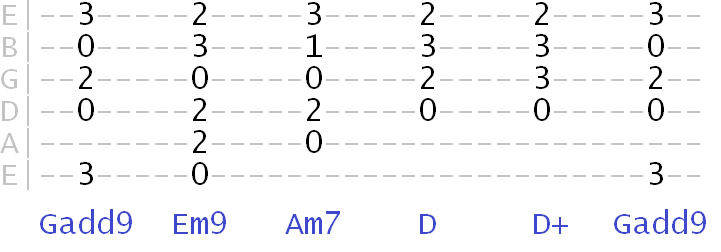
So be aware of where the 5 chord lies in relation to the tonic. If you're familiar with blues, this should be easy enough! For reference, here's the 1 - 5 relationship in several keys...
- A (1) - E (5)
- B (1) - F♯ (5)
- C (1) - G (5)
- D (1) - A (5)
- E (1) - B (5)
- F (1) - C (5)
- G (1) - D (5)
Minor Keys
This augmented 5 chord also occurs in minor keys and creates a similar harmonic tension. Same 1 - 5 root relationship, we just have a minor chord on the tonic position instead of major.
Take this A minor key example with Eaug as our 5 chord...
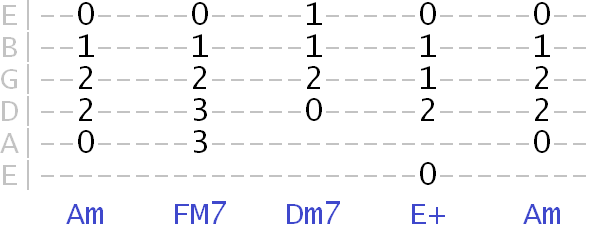
Augmented 7th Chords
We can enhance the tension of the augmented chord further by adding a 7th. This gives us two alternatives. Let's start with the most common...
An augmented 7th chord adds a flat 7 (♭7) to the augmented triad (so 1 3 ♯5 ♭7).
You'll see this written as aug7, +7 or 7#5. For example Caug7, C+7, C7♯5.
Some aug7 shapes...
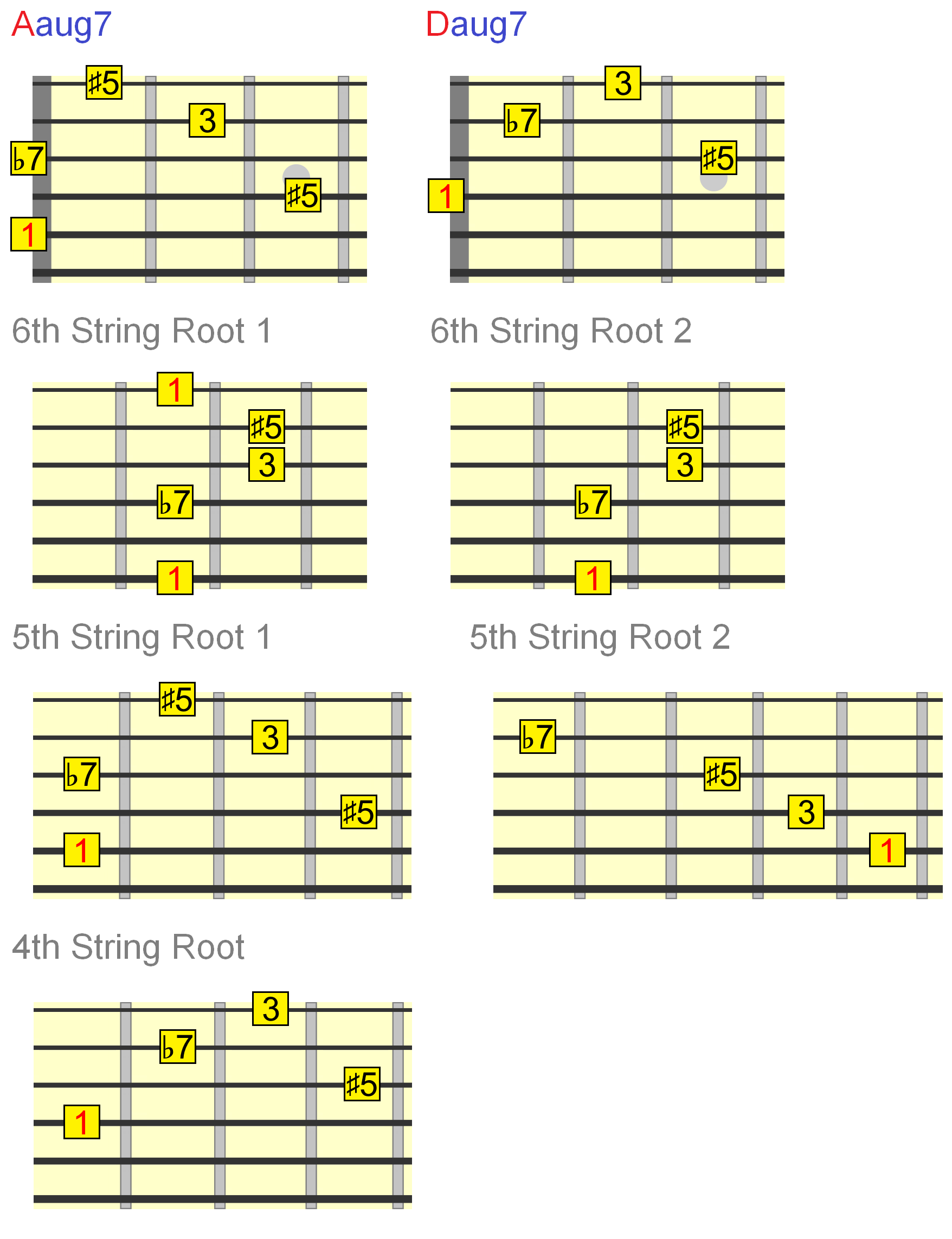
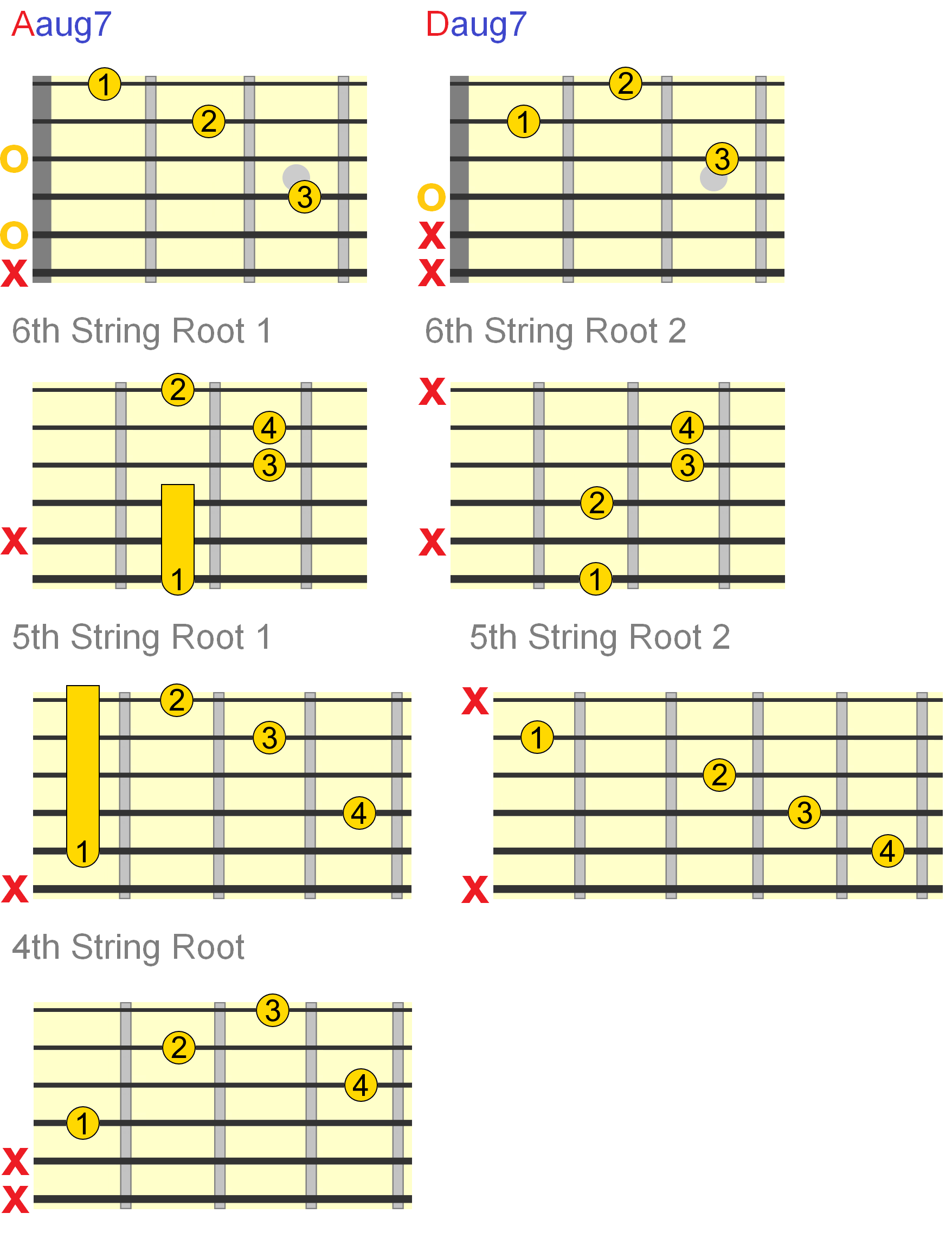
Augmented 7th Chords In Progressions
Now, as well as the 5 (V) position, we can use the augmented 7th shapes in other positions to create tension in our music.
But when outside the 5 position, and depending on the implied scale over the chord, be aware that it can be spelled as a 7th flat 13th chord (e.g. C7♭13), the ♭13 being enharmonic to the ♯5.
Same chord sound, different implied function.
Whether the altered interval is called a sharp 5 or flat 13th is for a whole other lesson! Just know that the chord voicing, in its purest sense, can generally be considered an altered dominant 7th chord.
Since both chord qualities have the same sound and use the same shapes we've learned, let's look at how they can be used in other positions...
III Chord
We could use any of the aug7 shapes above in the 3 position in major keys.
For example, in the key of G major, the 3 chord would naturally be Bm...
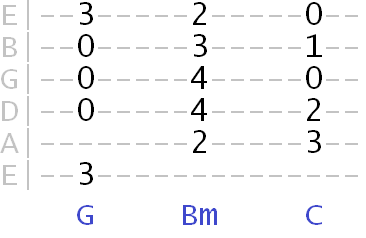
But we could also play B7♯5 (or B7♭13) for some variation (note that I've labelled it "B7alt" as whether it's a 7♯5 or 7♭13 would be open to interpretation)...
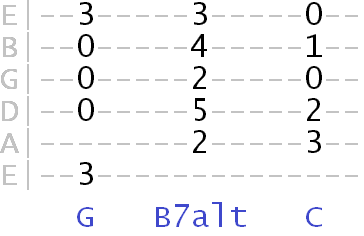
Using the same concept, composers often move from the 4 chord, down a half step to the augmented/altered III chord, such as in this example in D major...
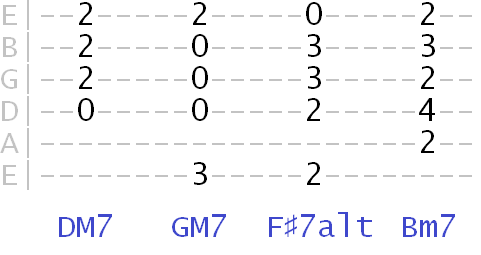
We can also use an augmented 7th shape to good effect in the 6 (VI) position in major keys. This is most easily visualised as being 3 frets down from the 1 chord root.
In the natural major key, the 6 chord is minor. For example, in the key of C major, the natural 6 chord would be Am...
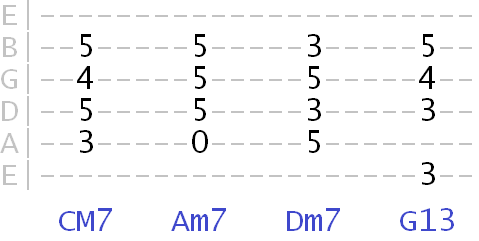
Let's try changing that 6 chord to an augmented/altered 7th shape... Here I've added an extra 7th on the 1st string, but it's not required...
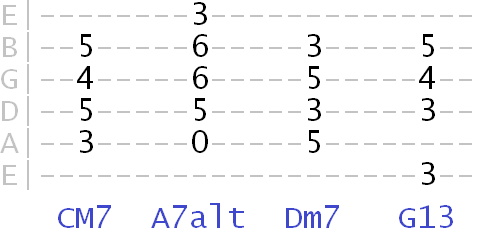
Although it's most common to move to the 6 straight from the 1, the augmented or altered 6 chord can follow other chords, such as the 3 chord in this E major key example...

All the examples we've looked at here involve common uses of the augmented chord. But remember that you are not limited to these! Experiment with using augmented shapes in different positions within your progressions.
If it sounds good, use it!
How To Use The "Symmetry" Of Augmented Triads
Back to the basic augmented triad. Earlier, I mentioned how their major 3rd component structure gives them what is known in music as symmetry.
This symmetry allows us to move any augmented triad in major 3rds across the neck.
Take this cut down Caug shape. We can see how a major 3rd interval separates each tone...
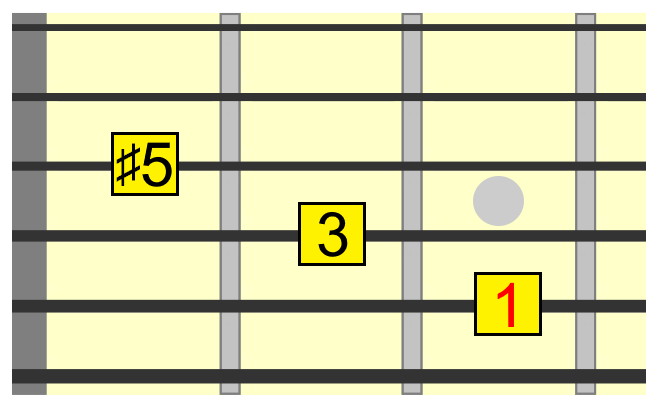
This means We can move that same shape up a major 3rd interval, the equivalent of 4 frets, and we're essentially playing the same augmented chord, just a different inversion, or different ordering of tones...

Move it another major 3rd interval to get another inversion...

They are all essentially the same C augmented triad, each a major 3rd apart. So we could theoretically use any one of these to voice the chord, depending on the voice leading effect we want.
Have a play with this example in F major, where we use two different Caug inversions in the same progression...

But we could also create a fluid movement of augmented harmony between them...
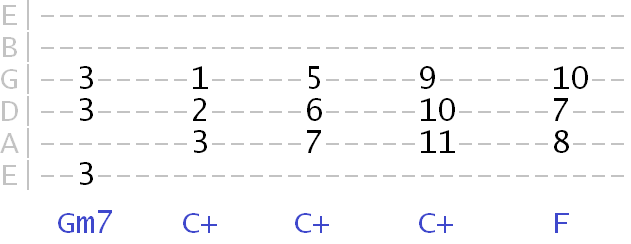
We can form similar inversions on any strings anywhere on the neck for the same augmented chord.
To help you find a starting point for any augmented chord you want to play, first learn this arpeggio pattern from 6th to 1st string. You can position it on any fret, but for this example I'm on A starting at the 5th fret...

We can then divide up this pattern into groupings of 3 strings and move each one up a major 3rd, just like before. Each grouping represents the same augmented triad, because of the major 3rd symmetry we established...

Notice how each inversion grouping conveniently forms the same pattern because of the chord's symmetry.
This means you can place the root, 3rd or ♯5 of any augmented chord you want to voice on any string and use that as a starting point.
For example, if we wanted to play B augmented, we might find its root of B on the 4th string and visualise our roadmap from there, remember that we can move any of these shapes across the neck in minor 3rds. Here I'm picking out 4 string "starting" shapes...
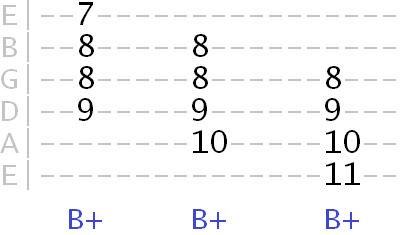
Or, we could visualise the B root on the 3rd string (4th fret) and build some more possible shapes from there...
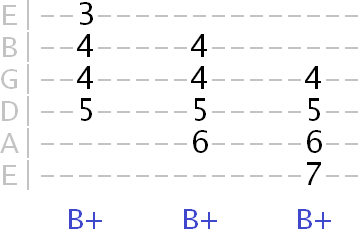
This knowledge allows you do accompany augmented chords more fluidly and with more awareness of voice leading to proceeding chords. For example, here I'm playing over Gaug7 to Cmaj - 5 to 1...

In both those examples, the ♯5 resolved up to the major 3rd of the tonic chord. This is the primary voice leading function of augmented chords in the 5 position and one way they aid the tension and resolution dynamic.
We'll look more specifically at voice leading in another lesson.
Augmented Major 7th Chords
Finally, let's have a quick look at the rather mysterious augmented major 7th chord (e.g. C+M7 - upper case "M" for major), sometimes called a major 7 sharp 5 chord (e.g. CM7♯5)
It's essentially an augmented triad with a major 7th. It can also be seen as major 7th chord with a sharp 5th.
You could think of it as an aug7 (from earlier) with the 7 raised.
This is an especially tense chord that you'll mostly hear in jazz music.
Most commonly, the augmented major 7th chord is used in the tonic position. Just like the augmented triad, it can be used to destabilise a major tonic, before typically moving to the 4 chord...
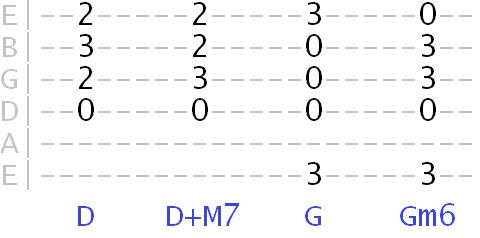
Or we can move to the augmented major 7th chord as the tonic for an unexpectedly unresolved feeling...
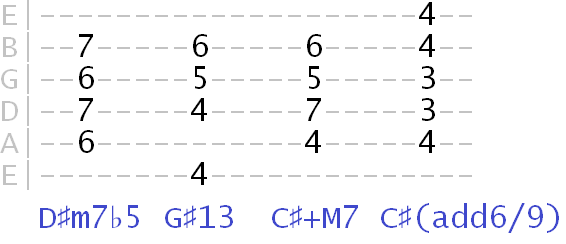
Keep Experimenting With Augmented Chords!
While what I've shown you in this lesson may seem like "rules", they are really just tried and tested functions of this specific chord type.
Spend time experimenting with augmented chords in different places in your progressions. You never know what you might discover!
Thanks for your time.
